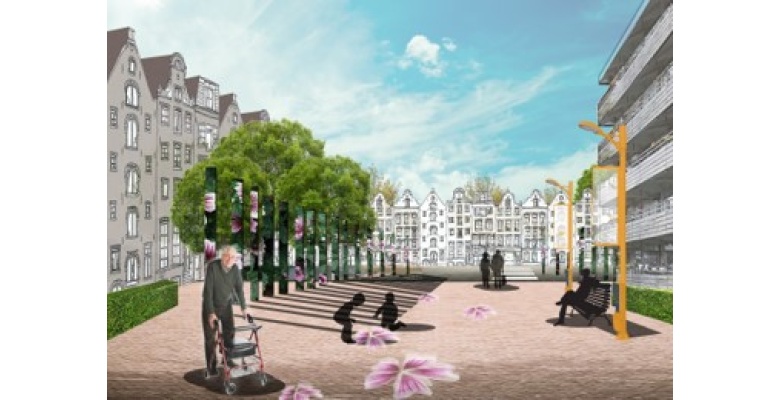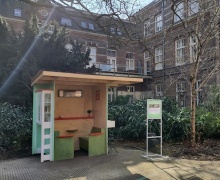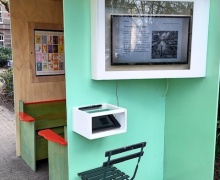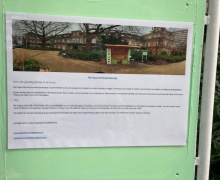It takes a village to grow old
Home > Projects > It takes a village to grow old

AI-based art interventions for the benefit of neighbourhood for people with dementia.
Social contacts and encounters in the neighbourhood are important for the people who live there. It also encourages community residents to live together and, in particular, people with early dementia. Artificial Intelligence artworks are rich in interaction and promote social contact, but in practice many dilemmas arise where democratic participation is at stake. The project ‘It takes a village to grow old’ emphasizes the importance of working together with citizens on a dementia-friendly neighbourhood.
The aim is to conduct research together with the Vondel/Helmersbuurt in Amsterdam into AI art objects in public space to stimulate encounters between people (with and without dementia) in the neighbourhood. The project responds to the need of people with dementia to continue living at home in the neighbourhood where they feel comfortable and safe.
The evaluation is also carried out jointly, looking at the effect of the AI art interventions on social interaction in the neighbourhood. In this way, the project uses the experiential knowledge of citizens (with dementia) as well as professional knowledge (care and welfare, AI and art), and academic knowledge (citizen participation, AI and smart living environment) to design meeting places in this neighbourhood.
In the project we want to learn in practice how participatory work towards a dementia-friendly neighbourhood takes shape between all participants. The starting point is that this process in itself already has added value for interaction in the neighbourhood. The project thus explores the dynamics between AI art interventions, place-making and social health based on the citizens science approach.
The research leads to: 1) (design) principles for social interaction between local residents (with dementia), 2) AI art interventions, 3) strategies to design public space together with citizens so that public familiarity and experienced neighbourliness are promoted and 4 ) validity criteria including the ethics of participatory design.
Images & Video



Publications
Validity of Citizen Science: A qualitative and arts-based evaluation from the perspectives of citizens, academics, artists and ICT-specialists
(2024 )Tamar Shahinian, Leonie van Buuren, Marja Peltenburg, Marlene Hoynk, Dannie van Bemmel, Somaya Ben Allouch, Masi Mohammadi, Saskia Robben, Marwan El Morabet & Barbara Groot-SluijsmansProceedings of SHE'24 download

